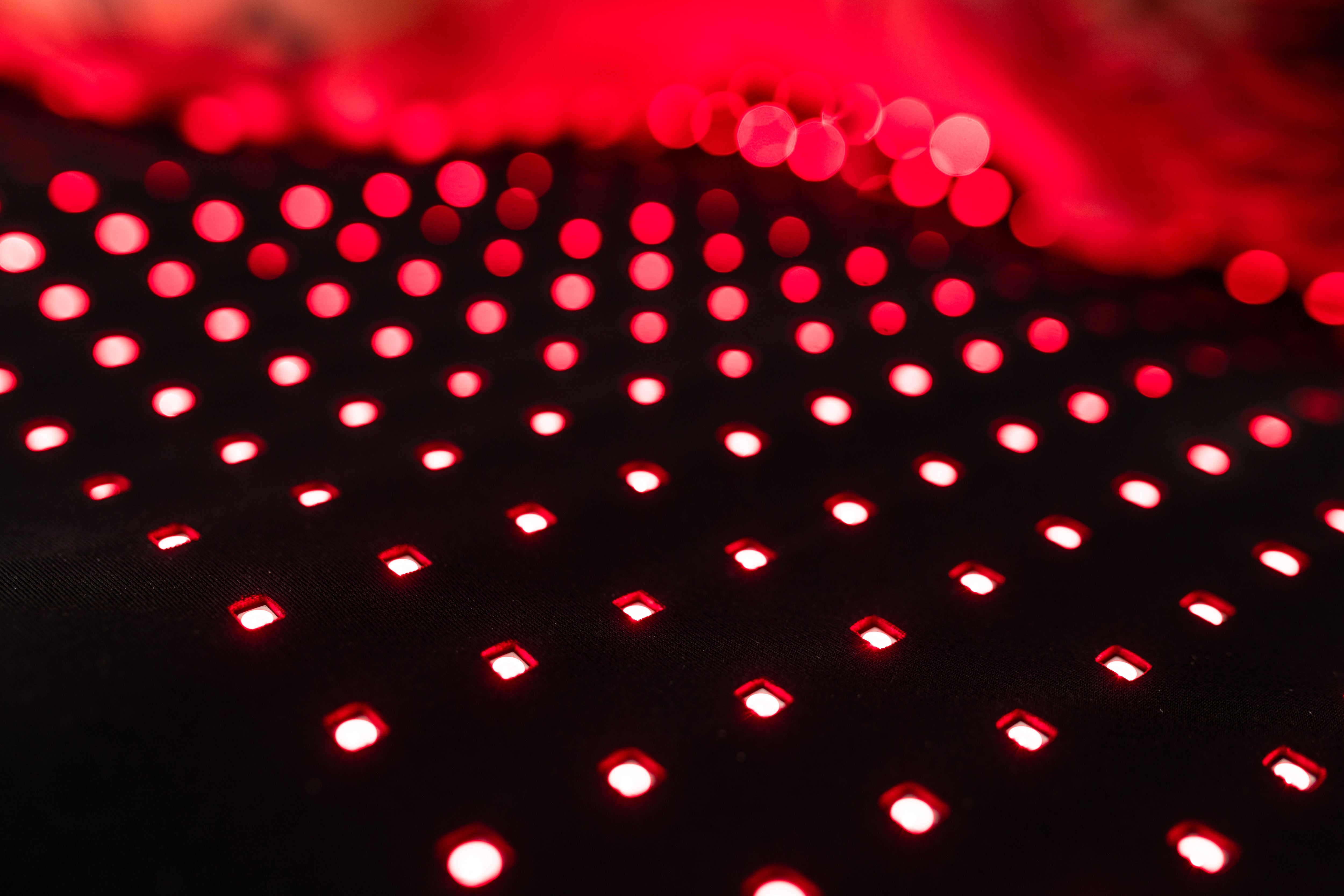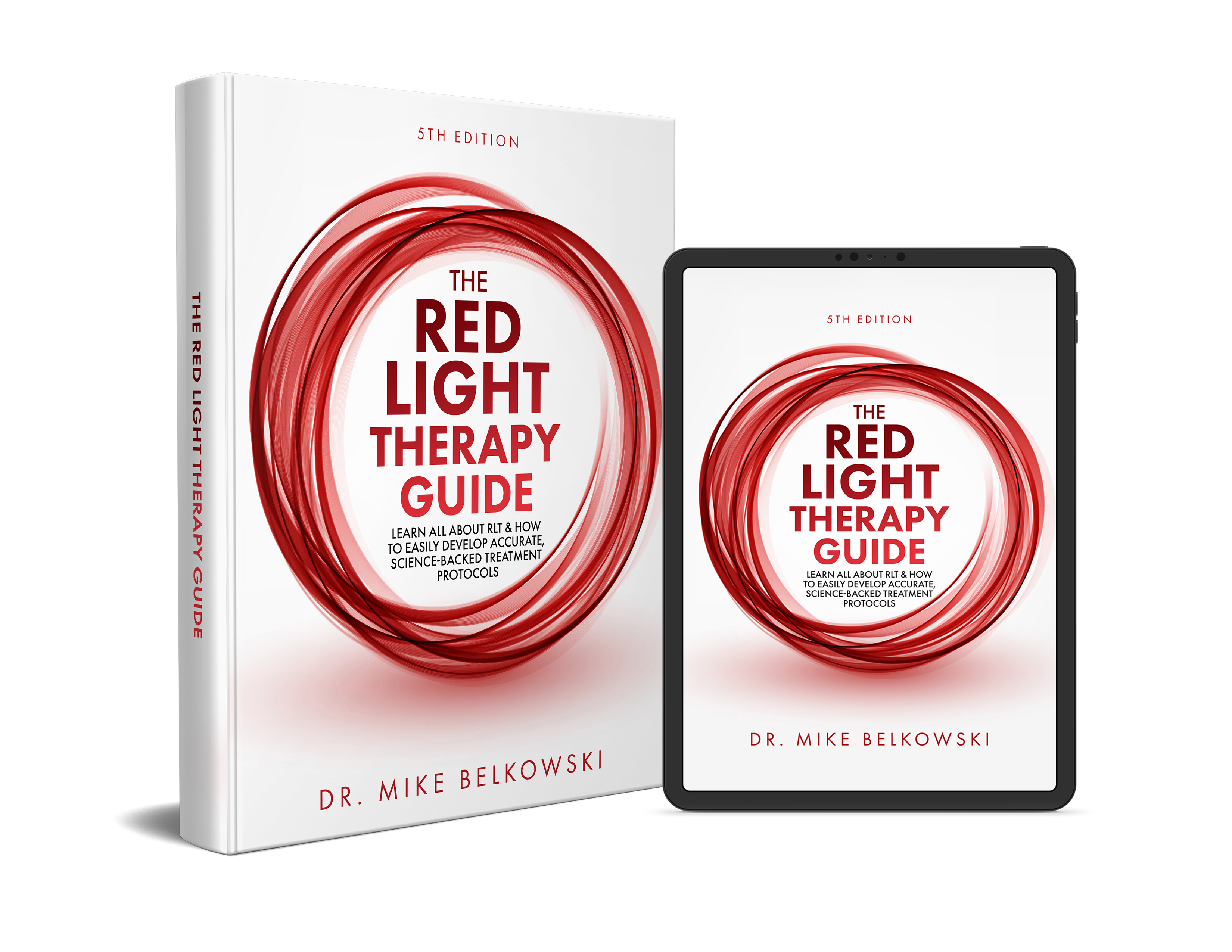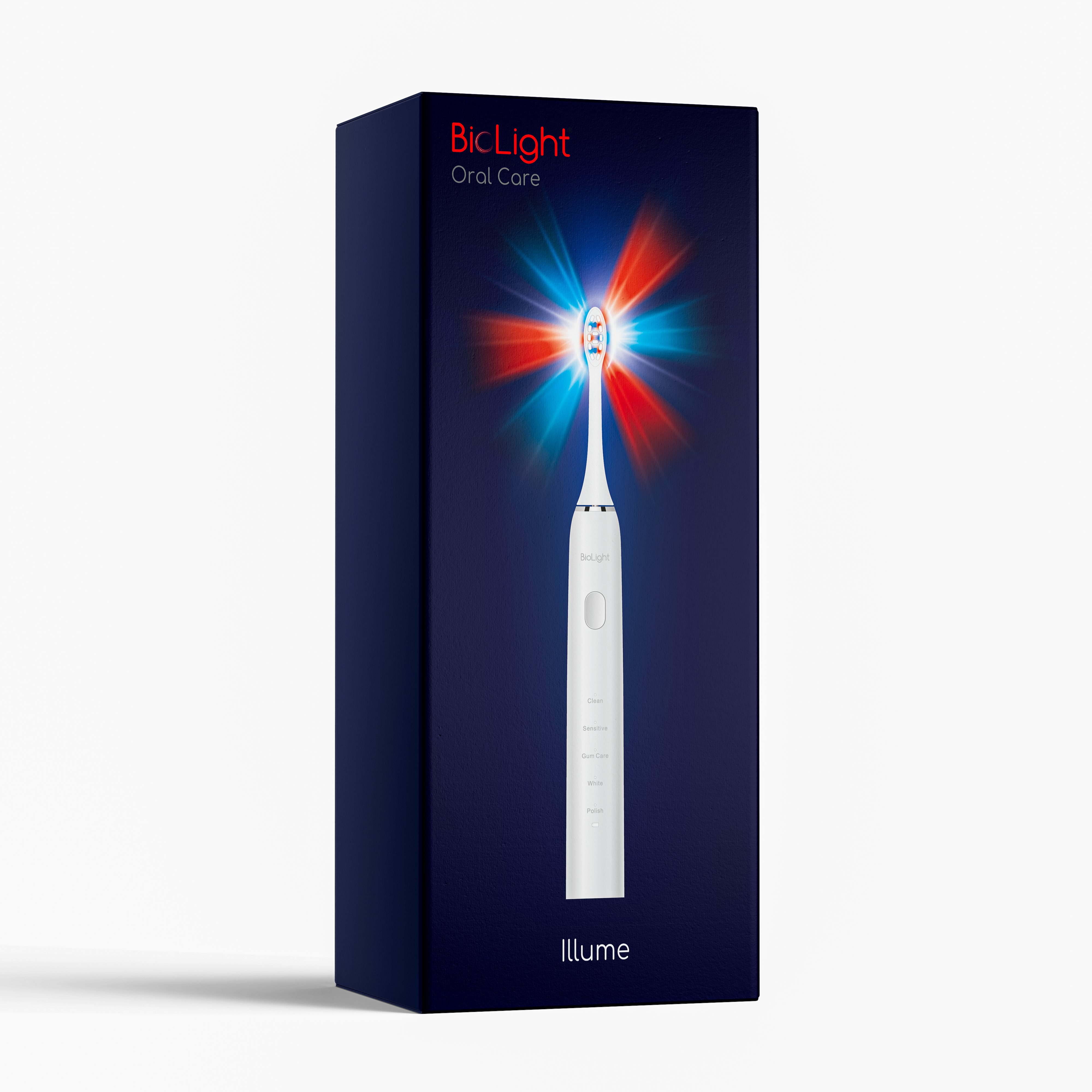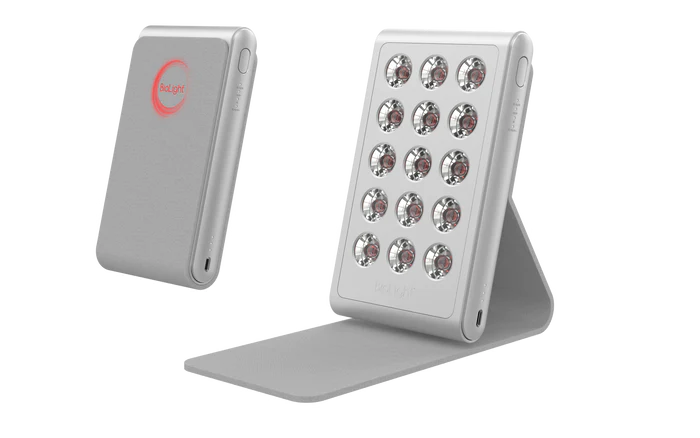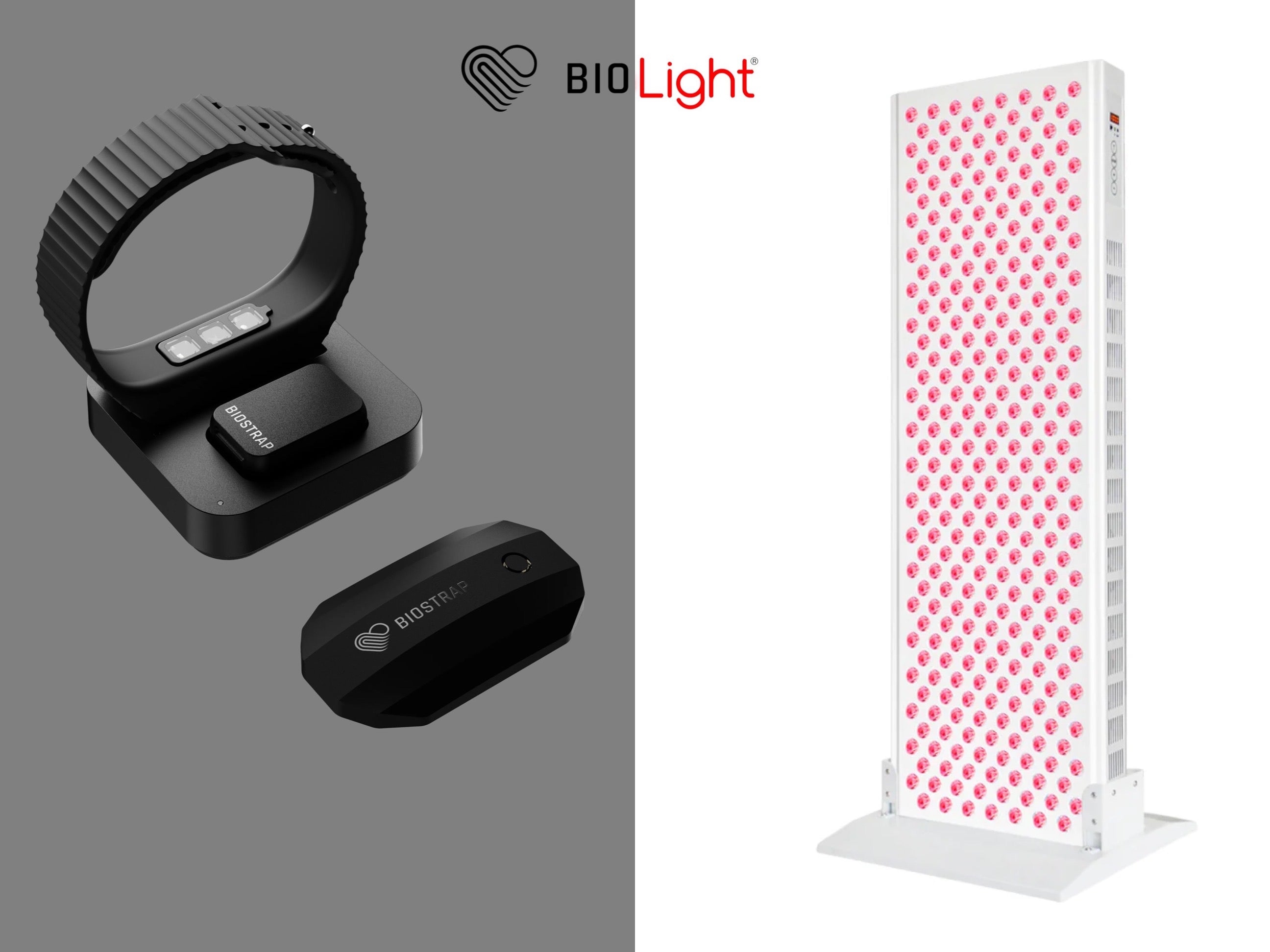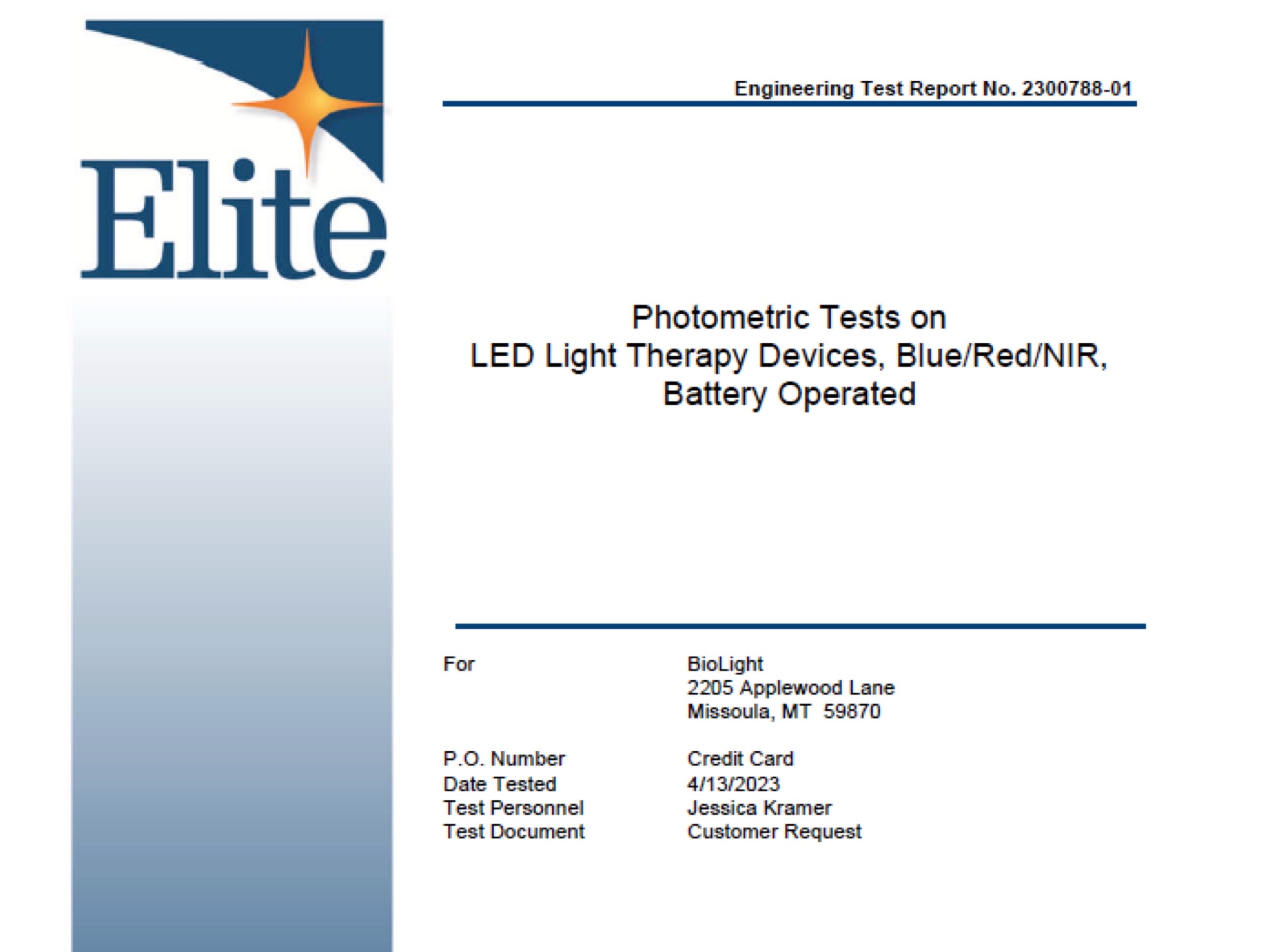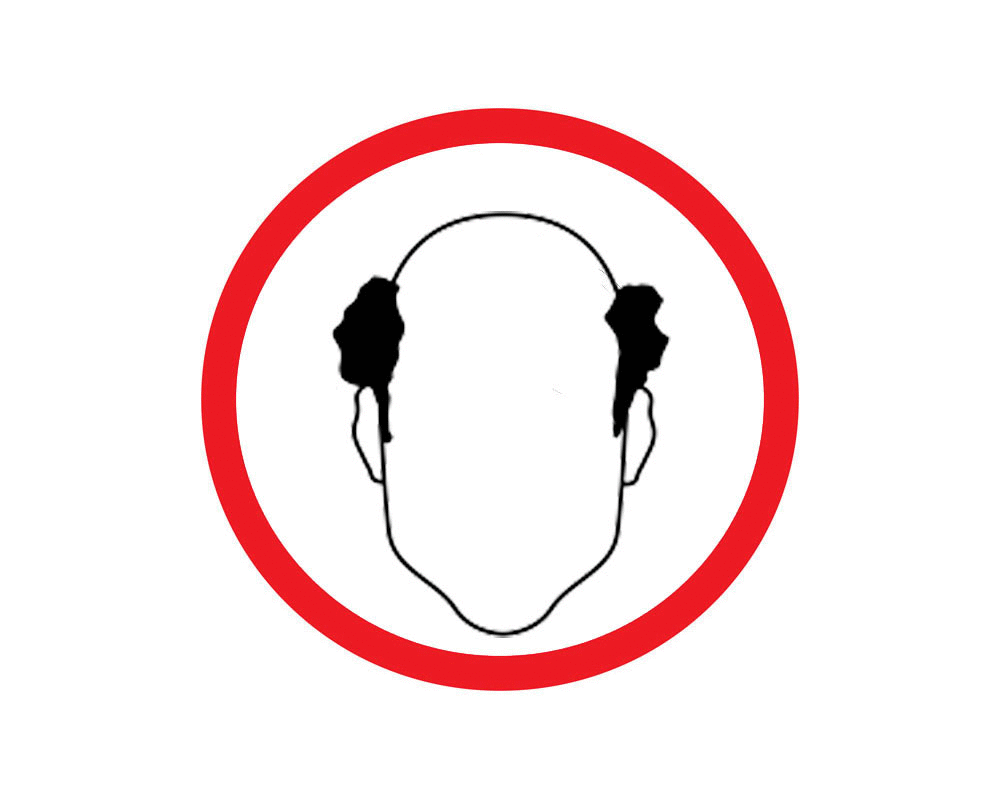How does RLT help?
Mitochondrial dysfunction and oxidative damage to the retina have been implicated in many forms of retinal injury and degeneration. Mitochondrial repair and attenuation of oxidative stress are critical to the long-term survival of the retina. Red light therapy has been shown to act on mitochondria-mediated signaling pathways to preserve mitochondrial function, attenuate oxidative stress, stimulate the production of cytoprotective factors and prevent neuronal death.

Tell me more...
Mitochondrial Dysfunction
Mitochondrial density is greatest in photoreceptors, particularly cones that have high energy demands and mediate color vision. Hence, the retina ages faster than other organs, with a 70% ATP reduction over life and a significant decline in photoreceptor function.
The pace of ageing is partly controlled by the cells metabolism regulated by its mitochondria and its ATP production to fuel cells with energy. When mitochondria decline and become dysfunctional, they have reduced ability to efficiently produce ATP. When this occurs, mitochondria can increase production of reactive oxygen species that increases systemic inflammation and can signal cell death.
Mitochondrial dysfunction and oxidative damage to the retina have been implicated in many forms of retinal injury and degeneration including methanol intoxication, light-induced retinal damage, age-related macular degeneration (AMD) and retinitis pigmentosa.
Red and near-infrared (NIR) light has been shown to act on mitochondria-mediated signaling pathways to preserve mitochondrial function, attenuate oxidative stress, stimulate the production of cytoprotective factors and prevent neuronal death in cultured neurons and in animal models of neuronal injury and disease.
Photons from NIR light can penetrate diseased retina, be absorbed by mitochondrial photoreceptors such as cytochrome c oxidase to promote mitochondrial energy beneficial metabolism, elevate production of cytoprotective factors and prevent apoptosis. Remarkably, NIR light may reduce death of photoreceptors by 70%. NIR light treatment can also prevent drusen, yellow deposits from macular degeneration due to aging, lower intraocular pressure as long as several months, indicating that NIR light can have beneficiaries in retinal and optic nerves. Most importantly, NIR light is safe but effective.
Retinal Pigment Epithelium
Another variable of eye health is related to the retinal pigment epithelium (RPE). The RPE is the main unit of the outer blood–retina barrier (BRB) and interacts with the choroid and retina to maintain the homeostasis of the ocular system.
The primary function of RPE is the formation of an outer BRB to control the molecular transportation from choroid to retina. Breakdown of the outer BRB, which is commonly presented in RPE degeneration, is seen in ocular pathologies, such as AMD.
The pathogenesis of diseases related to RPE degeneration has been known to be associated with dysfunction of the RPE due to an increase in oxidative stress, mitochondrial dysfunction, and complement dysfunction.
A 2022 study on RLT & RPE degeneration concluded that they expect RLT could improve several dysfunctions of the RPE and have potential as a new therapy for RPE degeneration.

And More...
Age-related Macular Degeneration
Progression of age-related macular degeneration (AMD) is characterized by accumulation of membranous debris, lipofuscin, and extracellular material and complement deposition. The advanced late-stage dry form of AMD, which accounts for 80% to 90% of the cases, is characterized by retinal pigment epithelium (RPE) and outer retinal atrophy. (CNV) as a hallmark of respective disease. Contributing factors to RPE cell degeneration include mitochondrial dysfunction, oxidative stress, inflammation and genetic disposition.
Since both mitochondria's health and the inflammatory state are influenced by RLT, it stood to reason that red and NIR light could treat AMD. Proposed mechanisms of action for RLT include enhanced photoreceptor mitochondrial function, counteracting inflammation, and enhanced supporting cell function. Also, the increased nitric oxide production via RLT also triggers downstream cascades to increase anti-antioxidant production, anti-apoptotic pathways, and cellular metabolism. Within photoreceptors, these changes amount to globally improved photoreceptor performance as measured by enhanced ATP production, secondary to optimized mitochondrial function.
According to scientific studies, brief exposure to RLT in the aged retina has been shown to increase mitochondrial membrane potential and reduce inflammation. RLT is effective in reducing retinal inflammation likely by cytochrome c oxidase activation in mice with a genotype similar to that in 50 % of AMD patients, even when brief exposures are delivered via environmental lighting. The efficacy in the current research supports current early stage clinical trials of RLT in AMD patients.
Dry Eye Disease
While evidence is emerging regarding the mechanisms of photobiomodulation therapy at a cellular level, this has not yet included the meibomian glands (oil glands along the edge of eyelids), or other features of the ocular surface. The tissue response of these structures to photobiomodulation currently remains unclear.
Overall, the current literature contains no, well-designed studies looking at the efficacy of RLT in the treatment of ocular surface disease. There is therefore, no clear evidence for the efficacy of RLT in the treatment of meibomian gland dysfunction or dry eye disease. While beneficial effects have been alluded to, the possibility cannot be excluded that these were not due to RLT but to heat generated by the LED array in the treatment device.
Light-induced Retinal Damage
Oxidative damage produced by photo-oxidation of the photoreceptor outer segments is widely accepted as the initiating event in light-induced retinal damage (LD). In addition to structural changes to the retina, there is the induction of an inflammatory state characterized by an invasion of the outer retina by activated microglia.
Several studies have shown that RLT is protective against light-induced retinal degeneration administered before, during or after exposure to LD protected photoreceptor function, which was seen by a reduction in photoreceptor cell death and inflammatory stress biomarkers in the retina.
Pretreatment with PBM proved to be most effective against LD compared to treatment during or after LD. Research findings indicate the RLT pretreatment attenuates oxidative damage to photoreceptors and reduces inflammation, which may reduce the stimulation of the complement cascade, thus further protecting photoreceptors.

What does the research show?
“Single exposures to 670nm (red) light delivered in the morning, at only 8 mW/cm2 have the ability to improve cone photoreceptor function in aged subjects to levels commonly found in much younger individuals and can be sustained for up to a week.” (1)
“In this short-term study, the PBM technique in patients with dry age-related macular degeneration showed the potential to improve visual acuity and macular perimetry without causing significant adverse events.” (2)
“In this study, we confirm the antioxidant effect of PBM in retinal pigment epithelium (RPE)… The function of RPE is protected by PBM against damage from hypoxia. Furthermore, we observed the protective mechanism of PBM by its suppression effect on reactive oxygen species generation. These results indicate that PBM shows great potential to cure RPE degeneration to help patients with blindness.” (3)
“NIR light therapy is an effective method for treatment of various tissues such as eyes and brains without side effects…This therapy has potential to be a “miracle medicine” to cure many diseases in near future. NIR light can penetrate these (eye) tissues and assist recoveries of neurons in methanol intoxication, optic nerve trauma and neuropathy, retinal injuries and pigmentosa, and macular degeneration.” (4)
“These findings show that subjects with dry AMD (age-related macular degeneration) in earlier stages of the disease are more likely to respond better to PBM compared to subjects with more advanced disease and extensive central tissue loss.” (5)
“LLLT given over a 2 week period led to an improvement in visual acuity in most patients with AMD. Unlike other therapeutic approaches, LLLT improved visual acuity in patients with AMD of every stage. This study of a case series shows that LLLT may be a novel therapeutic option for both early and advanced forms of AMD. This simple and highly effective treatment improves visual acuity and may help to prevent loss of vision without adverse side effects.” (6)
“This study demonstrated that 670nm PBM ameliorates the damaging effects of bright, continuous light on the retina. Tx with 670nm light before, during, or even after exposure to bright white light led to a significant reduction in photoreceptor cell death and prevented the severe disruption of the outer retina and the RPE.” (7)
“Present data suggest that treatment with red light can lead to significant protection of the retina from LD. This treatment has the potential to reduce the adverse effects of bright light exposure; moreover, this noninvasive therapeutic modality has considerable promise for the treatment of retinal degenerative disorders and ocular inflammatory disease conditions.” (8)
“Taken as a whole, these studies in experimental models of retinal and optic nerve injury and disease show that far-red and near-infrared RLT improves mitochondrial function, reduces oxidative stress and modulates inflammatory mediators, leading to decreased apoptosis and retinoprotection.” (9)
“Photobiomodulation treatment statistically improved clinical and anatomical outcomes with more robust benefits observed in subjects with earlier stages of dry age-related macular degeneration. Repeated RLT treatments are necessary to maintain benefits. These pilot findings support previous reports and suggest the utility of RLT as a safe and effective therapy in subjects with dry age-related macular degeneration.” (10)
“(Red light) LED treatment has an evident protective effect on retinal cells against light-induced damage, which may be an innovative and non-invasive therapeutic approach to prevent or to delay age-related macular degeneration.” (11)
“NIR photobiomodulation is protective against bright-light-induced retinal degeneration, even when NIR treatment is applied after exposure to light. This protective effect appears to involve a reduction of cell death and inflammation. Photobiomodulation has the potential to become an important treatment modality for the prevention or treatment of light-induced stress in the retina. More generally, it could be beneficial in the prevention and treatment of retinal conditions involving inflammatory mechanisms.” (12)
“(Regarding diabetic retinopathy) the treated eyes (using red light) of all patients demonstrated a statistically significant decrease in macular thickness by an average of 20%, while non-treated eyes featured a slight increase in thickness by 3% on average.” (13)
“Our study identified mitochondria related red light and near-infrared light-triggered defense mechanisms promoting photoreceptor neuroprotection. The observed improvement of mitochondrial and extramitochondrial respiration in both inner and outer segments is linked with reduced oxidative stress including its cellular consequences and reduced mitochondria-induced apoptosis.” (14)
“Treatment with red light before, during or even after exposure to blue light led to significant reduction in photoreceptor cell death and prevented the severe disruption of the outer retina and the RPE (retinal pigment epithelium). Photobiomodulation prevented the obliteration of the choroidal vascular network, thus assuring the maintenance of the blood-retina barrier… Photobiomodulation also reduced cell stress and inflammatory reaction in the retina.” (15)
**While the current scientific research seems to indicate many positive benefits of RLT in relation to fat loss, there is still an appreciable necessity for more extensive research to be conducted in this area, including double-blind RCT (randomized controlled trials), to provide a more comprehensive, robust overview that will further elucidate the optimal parameters and appropriate uses of RLT, which will ultimately lead the most safe and efficacious uses for eye health.
Citations
(1) Shinhmar, Harpreet et al. “Weeklong improved colour contrasts sensitivity after single 670 nm exposures associated with enhanced mitochondrial function.” Scientific reports vol. 11,1 22872. 24 Nov. 2021, doi:10.1038/s41598-021-02311-1
(2) Siqueira, Rubens Camargo et al. “Short-Term Results of Photobiomodulation Using Light-Emitting Diode Light of 670 nm in Eyes with Age-Related Macular Degeneration.” Photobiomodulation, photomedicine, and laser surgery vol. 39,9 (2021): 581-586. doi:10.1089/photob.2021.0005
(3) Kim, Jongmin, and Jae Yon Won. “Effect of Photobiomodulation in Suppression of Oxidative Stress on Retinal Pigment Epithelium.” International journal of molecular sciences vol. 23,12 6413. 8 Jun. 2022, doi:10.3390/ijms23126413
(4) Zhu Q, Xiao S, Hua Z, Yang D, Hu M, Zhu YT, Zhong H. Near Infrared (NIR) Light Therapy of Eye Diseases: A Review. Int J Med Sci. 2021 Jan 1;18(1):109-119. doi: 10.7150/ijms.52980. PMID: 33390779; PMCID: PMC7738953.
(5) Markowitz SN, Devenyi RG, Munk MR, et al. A DOUBLE-MASKED, RANDOMIZED, SHAM-CONTROLLED, SINGLE-CENTER STUDY WITH PHOTOBIOMODULATION FOR THE TREATMENT OF DRY AGE-RELATED MACULAR DEGENERATION. Retina. 2020;40(8):1471-1482. doi:10.1097/IAE.0000000000002632
(6) Ivandic BT, Ivandic T. Low-level laser therapy improves vision in patients with age-related macular degeneration. Photomed Laser Surg. 2008;26(3):241-245. doi:10.1089/pho.2007.2132
(7) Albarracin R, Eells J, Valter K. Photobiomodulation protects the retina from light-induced photoreceptor degeneration. Invest Ophthalmol Vis Sci. 2011;52(6):3582-3592. Published 2011 Jun 1. doi:10.1167/iovs.10-6664
(8) Albarracin, Rizalyn et al. “Photobiomodulation protects the retina from light-induced photoreceptor degeneration.” Investigative ophthalmology & visual science vol. 52,6 3582-92. 1 Jun. 2011, doi:10.1167/iovs.10-6664
(9) Eells, Janis T et al. “Near-Infrared Photobiomodulation in Retinal Injury and Disease.” Advances in experimental medicine and biology vol. 854 (2016): 437-41. doi:10.1007/978-3-319-17121-0_58
(10) Markowitz, Samuel N et al. “A DOUBLE-MASKED, RANDOMIZED, SHAM-CONTROLLED, SINGLE-CENTER STUDY WITH PHOTOBIOMODULATION FOR THE TREATMENT OF DRY AGE-RELATED MACULAR DEGENERATION.” Retina (Philadelphia, Pa.) vol. 40,8 (2020): 1471-1482. doi:10.1097/IAE.0000000000002632
(11) Qu, Chao et al. “Near-infrared light protect the photoreceptor from light-induced damage in rats.” Advances in experimental medicine and biology vol. 664 (2010): 365-74. doi:10.1007/978-1-4419-1399-9_42
(12) Albarracin, Rizalyn et al. “Photobiomodulation protects the retina from light-induced photoreceptor degeneration.” Investigative ophthalmology & visual science vol. 52,6 3582-92. 1 Jun. 2011, doi:10.1167/iovs.10-6664
(13) Geneva, Ivayla I. “Photobiomodulation for the treatment of retinal diseases: a review.” International journal of ophthalmology vol. 9,1 145-52. 18 Jan. 2016, doi:10.18240/ijo.2016.01.24
(14) Heinig, Nora et al. “Photobiomodulation Mediates Neuroprotection against Blue Light Induced Retinal Photoreceptor Degeneration.” International journal of molecular sciences vol. 21,7 2370. 30 Mar. 2020, doi:10.3390/ijms21072370
(15) Albarracin, Rizalyn et al. “Photobiomodulation protects the retina from light-induced photoreceptor degeneration.” Investigative ophthalmology & visual science vol. 52,6 3582-92. 1 Jun. 2011, doi:10.1167/iovs.10-6664
